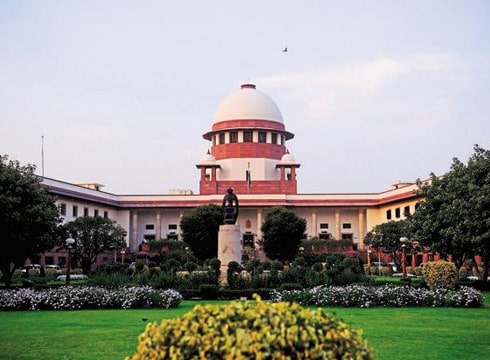
Bigamy under Hindu Marriage Act, 1955
The Hindu Marriage Act, 1955, is seen as a landmark social legislation as it has reformed law of marriage. It has curtailed the religious and ceremonial overtones, and instead brought around a more practical as well as contractual aspects.
The Hindu Marriage Act, 1955, is applicable on:
- Any person who is a Hindu by religion in any of its form: a Virashaiva, a Lingayat or a follower of the Brahmo, Prarthana or Arya Samaj;
- any person who is a Buddhist, Jaina or Sikh by religion; and
- any other person domiciled in the territories to which this Act extends who is not a Muslim, Christian, Parsi or Jew by religion.
What is Bigamy?
The dictionary meaning of the term states its meaning as, “the act of entering into a marriage with one person while still legally married to another.”
Bigamy and Hindu Marriage Act, 1955:
Section 5(i) of the Hindu Marriage Act, 1955, prohibits bigamy and polygamy. A bigamous marriage is declared void by Section 11 and furthermore, it is made an offence under Section 17 of the Act and is punishable Section 949 of the Penal Code. These Sections are applicable to both Hindu males and females.
Punishment of Bigamy:
Section 17 of the Act reads: Any marriage between two Hindus (including Buddhist, Jaina or Sikh) solemnized after the commencement of this Act is void if at the date of such marriage either party had a husband or wife living; and the provisions of Sections 494 and 495 of the Indian Penal Code shall apply accordingly.
Classification of offence:
The offence of bigamy is non-cognizable, and thus bailable (except in Andhra Pradesh). It also is a compoundable offence with wife’s consent and the Court’s permission, as stated by the Supreme Court in the case of Parameswariv. Vennila[1].
Constituents of Bigamy:
In a landmark judgement in the case of Pashaura Singh v. State of Punjab[2] the Supreme Court stated that to prove that an offence of bigamy has been committed it must be established that:
- the accused must have contracted first marriage;
- either of the spouses must have married again;
- the first marriage must be subsisting; and
- the first spouse must be living.
Case Law:
A Hindu wife filed a complaint, that her husband had taken a second wife, after converting to some other religion, the offence of bigamy was pleaded by her. In this case the Supreme Court commented, that since under the Hindu Marriage Act a bigamous marriage solemnized by the husband during the subsistence of first marriage is illegal, therefore, the offence shall be triable under Section 17 of the Hindu Marriage Act despite his conversion. The conversion of the husband to some other religion shall not blanket him from legal action.
Who can file a Complaint?
Section 198 of the Criminal Procedure Code enumerates as to who all can file a complaint of bigamy.
In case of the husband, only he himself is entitled to do so, exceptions being in case of him serving in the armed forces and is unable to secure leave to file the complaint.
In case of the wife, she herself or her father, mother, brother, sister, daughter, son, or any other person related to her by blood, marriage or adoption.
Evidence of Bigamy is a must:
In a landmark judgement in the case of Nagalingam v. Sivagami[3], the Apex Court reiterated that in order to prove a case of bigamy it is essential to prove the validity of second marriage.
The appellant in this case was acquitted by the Metropolitan Magistrate but this judgement was reversed by the Madras High Court. The Supreme Court agreed with the Madras High Court as it found the second marriage to be valid and performed as per the customs prevalent. Thus, the appellant was found to be guilty of committing the crime of bigamy.
[2] (2010) 11 SCC 749
[3] (2001) 7 SCC 487
A Departmental Enquiry can be initiated:
In one of outstanding judgements, the Apex Court in the case of State of Karnataka v. T. Venkataramanappa[4], established that even if an individual was acquitted in a case of bigamy, still a departmental enquiry can be initiated against him.
Time Limitation:
In the case of M.Saravana Porselvi v. A.R. Chandrashekar[5], the Supreme Court made it quite clear that there is no limitation of time period to take action against bigamy. It is imperative of when the second marriage was solemnized, the criminal procedure can be set in motion any time.
Case of Ex-parte decree of divorce:
In a scenario where a spouse who has secured a one-sided divorce from a Court and remarries but later, the first wife is successful in overturning the divorce, can the man be prosecuted for bigamy?
In a landmark judgement in the case of Krishna Gopal Dwivedi v. Prabha Dwivedi[6], the Apex Court made it quite clear that the man shall not be held guilty of bigamy. The reasoning behind this is that during that time period when he married for the second time, he was legally divorced.
Conclusion:
Bigamy is a social problem that has been in our society from ancient times. Its impact on the affected women and families is great and ranges from financial difficulties to psychological complications. Both the women are aggrieved in such cases but on the one hand, the first wife, who is legally wedded, gets all empathy, the second wife is shunned and ostracized by the society at large.
The Hindu Marriage Act, 1955, has done a commendable job in the sense that it has made remarkable changes in the Act and adopted modern outlook. It goes a long way in securing the rights of the first wife in almost all stance giving preference to the inherent cultural sanctity of Hindu marriages.
Each case law is an outstanding example of an ever-evolving legal system. Different circumstances and varied situations need to be scrutinized independently, wholly on the merits of it. Society is always changing and evolving and thus, it is the need of the hour that the legal issues are weighed in this context.
[4] (1996) 6 SCC 455
[6] (2002) 10 SCC 216

